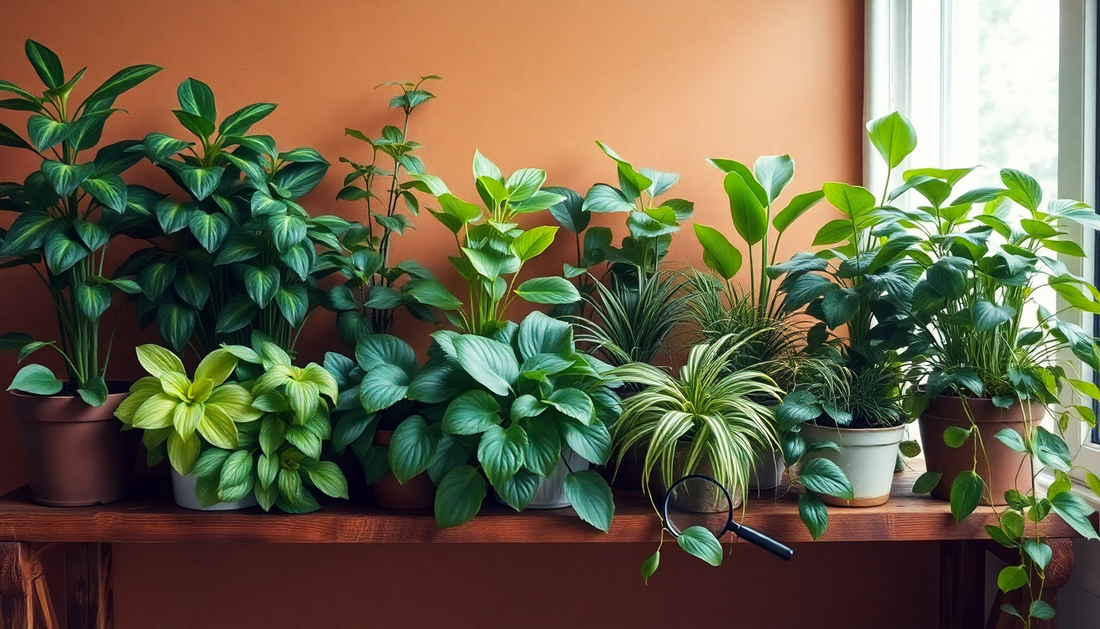
10 Houseplants That Are Most Prone to Disease
As a plant enthusiast, you know the joy of watching your indoor greenery thrive. However, with the joy comes the responsibility of keeping your plants healthy and disease-free. Some houseplants are more susceptible to common plant ailments than others, and understanding which ones are prone to disease can help you take proactive measures to keep your indoor garden flourishing.
In this comprehensive guide, we'll explore 10 of the most disease-prone houseplants and provide you with the knowledge to identify, prevent, and treat common plant diseases. Whether you're a seasoned plant parent or just starting your indoor gardening journey, this information will equip you with the tools to maintain a healthy, vibrant collection of houseplants.
Understanding Plant Diseases
Before we dive into the specific plants, it's essential to understand the basics of plant diseases. Houseplants can fall victim to a variety of fungal, bacterial, and viral infections, as well as pest infestations that can compromise their health. Factors such as improper watering, poor air circulation, and inadequate light can also contribute to the development of plant diseases.
By recognizing the early signs of disease and taking prompt action, you can often prevent the spread of infection and save your beloved plants. Regular inspection, proper care, and a keen eye for potential problems are key to maintaining a healthy indoor garden.
10 Houseplants Prone to Disease
-
Fiddle-Leaf Fig (Ficus lyrata): This trendy houseplant is susceptible to a variety of diseases, including bacterial leaf spot, root rot, and fungal infections. Proper watering, adequate sunlight, and good air circulation are essential to keeping fiddle-leaf figs healthy.
-
Monstera Deliciosa: While the Swiss cheese plant is a popular choice for its striking foliage, it can be prone to fungal diseases like anthracnose and bacterial leaf spot. Maintaining proper humidity levels and avoiding overhead watering can help prevent these issues.
-
Pothos (Epipremnum aureum): This easy-to-grow trailing plant can fall victim to root rot, fungal leaf spots, and even spider mite infestations. Ensuring well-draining soil and proper watering habits are crucial for keeping pothos healthy.
-
Peace Lily (Spathiphyllum): Despite their delicate appearance, peace lilies can be susceptible to a range of diseases, including bacterial and fungal leaf spots, as well as root rot. Monitoring soil moisture and providing adequate air circulation are essential for these plants.
-
Philodendron: From the heart-shaped leaves of the classic philodendron to the towering varieties, these plants can be prone to fungal infections like leaf blight and root rot. Maintaining the right balance of moisture and air flow is key to preventing disease.
-
Dracaena: These tall, striking houseplants can be vulnerable to bacterial leaf spot, fungal infections, and even spider mites. Proper watering, good air circulation, and vigilance for early signs of disease are necessary for keeping dracaenas thriving.
-
Calathea: With their vibrant, patterned foliage, calatheas are a popular choice for indoor gardens. However, they can be susceptible to fungal diseases like leaf spot and bacterial infections. Maintaining high humidity levels and avoiding direct sunlight are crucial for these plants.
-
Rubber Tree (Ficus elastica): While rubber trees are known for their resilience, they can still fall victim to fungal diseases like leaf spot and root rot. Proper watering, good drainage, and adequate sunlight are essential for keeping these plants healthy.
-
Chinese Evergreen (Aglaonema): These vibrant, low-light tolerant plants can be prone to a variety of diseases, including bacterial leaf spot, fungal infections, and even viral diseases. Maintaining the right balance of moisture and air flow is crucial for Chinese evergreens.
-
ZZ Plant (Zamioculcas zamiifolia): Despite their reputation for being low-maintenance, ZZ plants can be susceptible to fungal diseases like leaf spot and root rot. Ensuring proper soil drainage and avoiding overwatering are key to keeping these plants thriving.
Preventing and Treating Plant Diseases
Now that you're aware of the most disease-prone houseplants, it's time to learn how to prevent and treat these common issues. Here are some essential tips:
Prevention
- Maintain proper watering habits: Avoid overwatering or letting plants sit in standing water, as this can lead to root rot and other fungal diseases.
- Ensure adequate air circulation: Good air flow helps prevent the buildup of humidity and the spread of fungal spores.
- Provide the right amount of light: Most houseplants thrive in bright, indirect light, but too much or too little can make them more susceptible to disease.
- Practice good hygiene: Clean your gardening tools, disinfect pots, and remove any diseased or dead plant material to prevent the spread of infections.
- Consider disease-resistant varieties: When possible, choose houseplant cultivars that are known to be more resistant to common diseases.
Treatment
- Identify the problem: Carefully inspect your plants for signs of disease, such as discolored leaves, wilting, or unusual growths. This will help you determine the appropriate treatment.
- Use fungicides or bactericides: If a fungal or bacterial infection is present, apply a targeted fungicide or bactericide according to the product instructions.
- Isolate affected plants: To prevent the spread of disease, isolate any infected plants from the rest of your collection until the issue is resolved.
- Adjust environmental factors: Address any underlying issues, such as poor drainage or lack of air circulation, that may be contributing to the plant's susceptibility to disease.
- Prune and remove affected parts: Carefully remove any diseased or damaged leaves, stems, or roots to prevent the infection from spreading.
By understanding the most disease-prone houseplants and implementing proactive prevention and treatment measures, you can maintain a thriving indoor garden and enjoy the beauty and benefits of your beloved plants for years to come.






No comments